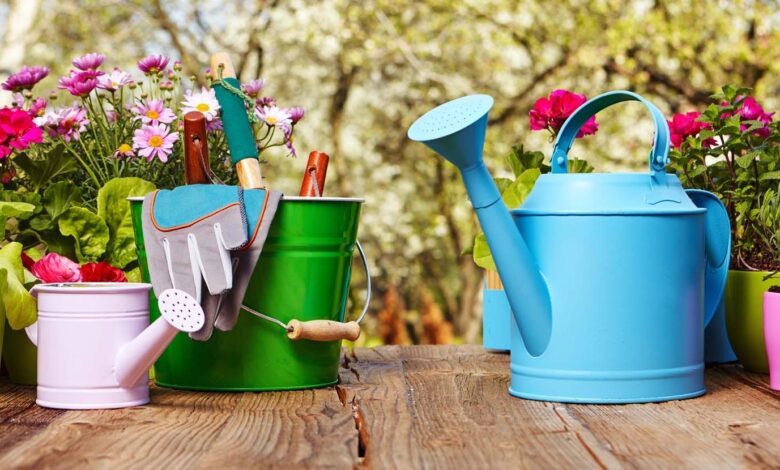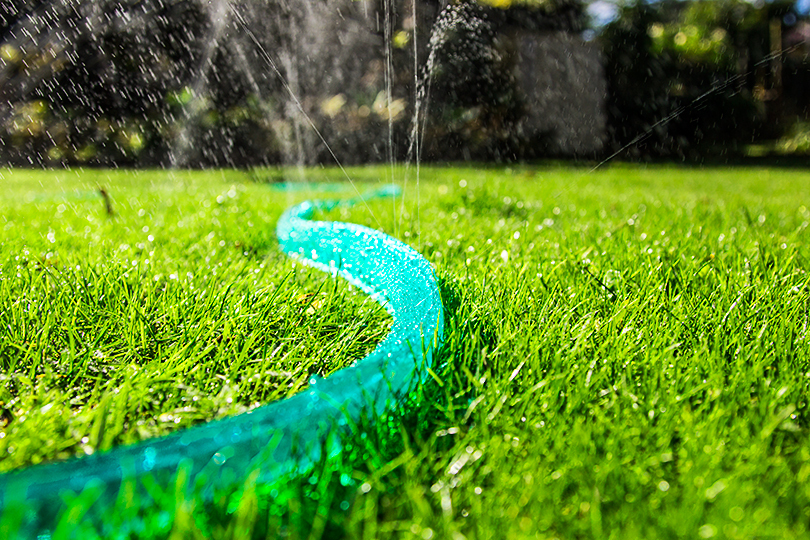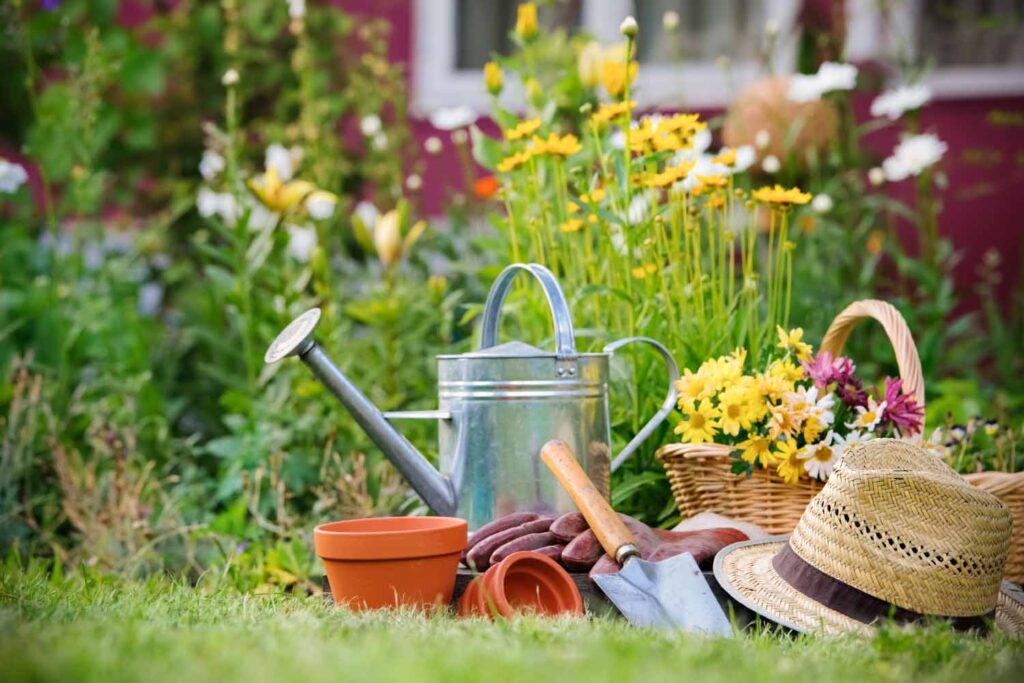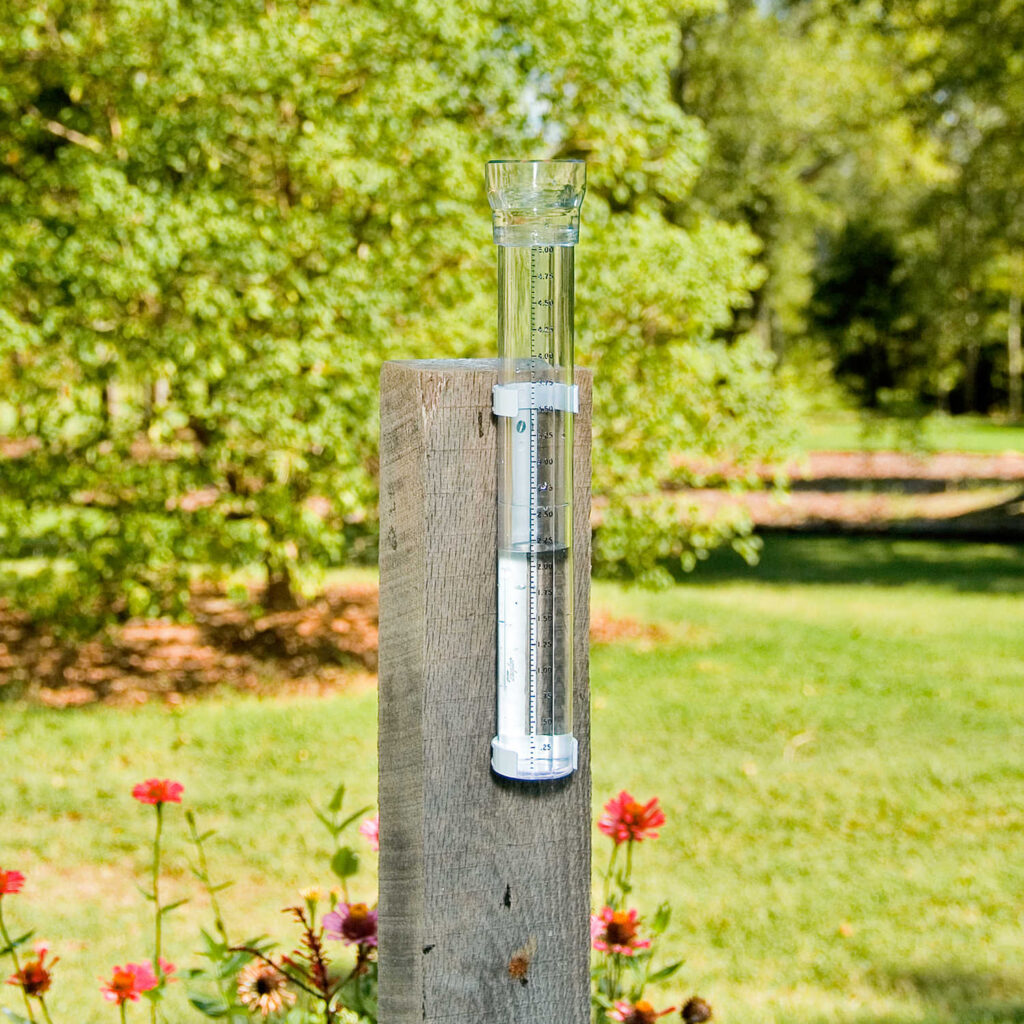The Types of Watering Tools

It’s a common misconception that the only lawnmower, path lights, and wind spinners are necessary accessories for your garden. For some patio without vegetables, such as tomatoes, peppers, and squash, this is entirely true. But those of us who can’t imagine life without homegrown produce – irrigation system is the most important part of gardening. Go to allneedoff for a comprehensive view about garden spinners.
There are so many tools for watering, everything from your everyday watering can to sprinklers that look like little tractors and travel the length of your hose while watering. If you’re not lucky enough to have a built-in sprinkler system (as I suspect many of us are not) the choices can be daunting. So here are the best tools I can recommend for making any watering chore easier. Most of them are designed to reduce the time and effort you dedicate to watering and make it as hustle-free as possible. Of course, sometimes you have to do the work yourself unless you want to spend thousands of dollars on a fully automated system.
1. A good, old-fashioned oscillating sprinkler
 Source: epicgardening.com
Source: epicgardening.com
This is the best sprinkler I have found for watering a lawn and adjacent beds. It covers a fairly large area, and covers it evenly. Best of all, they’re cheap and you can find them anywhere. One issue with them is that you have to turn them off and move them periodically. Fortunately, there is a solution for that as well. It is called a traveling sprinkler. These self-powered units will travel the length of your hose and deliver water to the surrounding area. With a suitable model, you can water your entire garden in one go. Many have an automatic setting that will shut off the water once enough of it was delivered, making it a truly hustle-free solution. Set it up and leave it to do its work. Once it reaches the designated point on the hose, it will turn itself off, without any need to babysit it.
2. A rain wand
 Source: johnnyseeds.com
Source: johnnyseeds.com
These are invaluable for watering hanging pots, garden beds, filling birdbaths. you name it, you can water it with one of these. I have one that has adjustable settings for everything from a fine mist to a full-on stream of water. I use it constantly. It is also very handy for delivering weed killers, fungicide, pesticide, or liquid fertilizer to your plants. Young plants will respond much better to being watered with one of these than with just a slosh of water. For delicate and precise work, they are invaluable.
3. Soaker hoses
 Source: homevibe.co.uk
Source: homevibe.co.uk
These are the best, most efficient, healthiest way to water flower and vegetable gardens. You hook it up, and the water trickles out of pores in the rubber hose, delivering water directly to the root zone of the plants. This way, you don’t get water on the leaves, which can cause fungal problems, and you don’t waste as much to evaporation. Perhaps best of all, you can just leave them in place during the growing season. Simply cover them with mulch, and you’ll never know they’re there. It is one of the most efficient ways to keep your plants watered. Over time, it will save you incredible amounts of water and effort. All you have to do is turn it on and off. If you want, you can eliminate even that by using a cheap automatic faucet with a time switch.
4. A long hose on a garden hose reel
 Source: poolcleanerblog.com
Source: poolcleanerblog.com
Before I got my house, I didn’t really see the point of a hose reel. Now that I have my house, and a large yard, I can truly appreciate how much time a hose reel saves me. In my yard, I have a 200-foot long hose attached to a hose reel. I can reach anywhere in my yard with the hose, and it takes me mere seconds to wind it up. Even more important, I never have to remove kinks or tangles from my hose before I can water. It is a huge time-saver and makes watering your plants a breeze. Just imagine having to spend 20 minutes untangling the hose every time you want to use it and rolling it once you are done. It will quickly kill any enthusiasm you have for keeping your lawn in pristine condition and will lead to neglect. Check out the guide here for more watering tools and garden equipment.
5. Watering Can
 Source: id-team.org
Source: id-team.org
I know, I know. What do I need a watering can for when I have all this other stuff? Say you just need to water one of the pots on your front porch. Do you really want to have to unreel a hose, turn on the water, reel it back in, and all that? Of course not. Fill up a watering can and take care of it. Sometimes the low tech way is the best way.
6. Rain Gauge
 Source: forestry-suppliers.com
Source: forestry-suppliers.com
How many times have you thought you don’t have to water your plants because it was raining the night before, only to discover that they are dying due to lack of water? Rain can be misleading. Just because the pavements are wet, it doesn’t mean there was enough rain to keep everything thriving. The trouble is that it can be hard to determine this. That is why a rain gauge is a vital tool. A quick glance will tell you how much rain there really was and whether you need to use the hose or not. There are plenty of models available on the market and some of them are quite cheap, so there is really no excuse for not getting one. There are also more expensive gauges that can be linked with your automatic sprinkler system and disable them is there was plenty of rain. Keeping an eye on the amount of rain is a crucial step to avoid your plants having too much or too little water available to them.
I hope this helps you narrow down your choices for watering tools. It will keep your plants healthy until you’re able to get that automated sprinkler system you’ve been dreaming of!